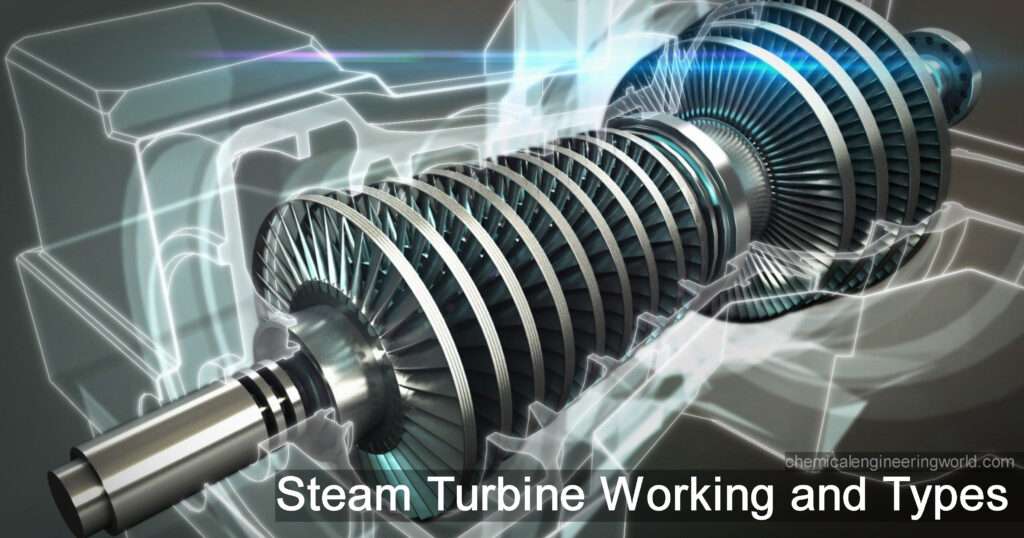Steam Turbine Working and Types

Steam Turbine Working and Types
Steam Turbine Working and Types
A steam turbine is a machine that converts thermal energy generated from pressurized steam into kinetic energy which is then converted into mechanical energy in order to turn a rotating shaft. This shaft is connected to a generator through which power is produced. A very large portion of the world’s power requirements are met with the help of these steam turbines that are present in nuclear, electric and coal based power plants. In the US alone, about 88% of power is produced by using steam turbines integrated in central station power plants. The very first modern-day steam turbine was developed by Sir Charles A. Parsons in 1884. Since then, a lot of significant improvements have been made in terms of production capacity and efficiency.
Steam turbines are extensively used in combined cycle power plants. In these plants, gas turbines produce excess heat and energy which can then be used to produce steam and thus run the steam turbine. The combination of these two turbines together help in efficiently producing power in these plants.
Types of Steam Turbines
There are basically two types of steam turbines in the market today based on steam flow: 1. Reaction turbine 2. Impulse turbine. Most reactors in use have a combination of both designs in various stages of the turbine. The lower pressure regions comprise of the reaction design and the higher pressure regions will have the impulse design. In impulse turbine, the steam coming out from the fixed nozzle strikes the blades that are fixed on the periphery of the rotor at a very high velocity. The steam completely expands inside the nozzle and as a result, the pressure does not change as it moves through the blades. In the case of reaction turbine, steam pressure gradually decreases while it expands through the alternate sets of fixed and moving blades. There are no nozzles present in the reaction turbine as the fixed blade itself acts as the nozzle.
Working of Steam Turbines
As the name suggests, steam is required for the running of a steam turbine. This steam is produced by boiling water using a heat source which could be nuclear, gas or coal. This steam is then admitted towards the blades of the shaft. The blades of the turbine is in the shape of an airfoil. This shape aids in the rotation of the turbine as it provides a lift force. The turbine has a set of alternating fixed nozzle and blade arrangement. The nozzle is stationary and its area decreases from one side to the other, thereby increasing the velocity of steam flowing through it. This helps in increasing the speed of the blades as well. The turbine is connected to a generator which has a magnet that is wound by copper coils. The rotation of the magnet produces a strong magnetic field and this magnetic field causes the flow of electrons and thus electricity is generated.
Reference/Image :- petrotechinc, wikipedia, youtube, fisair






























